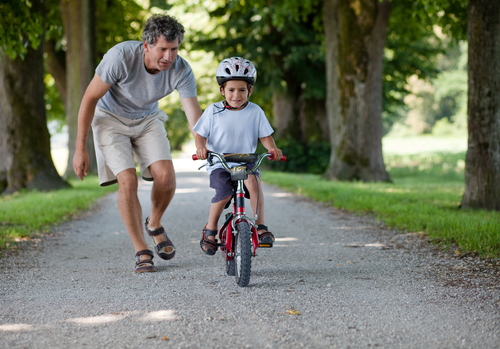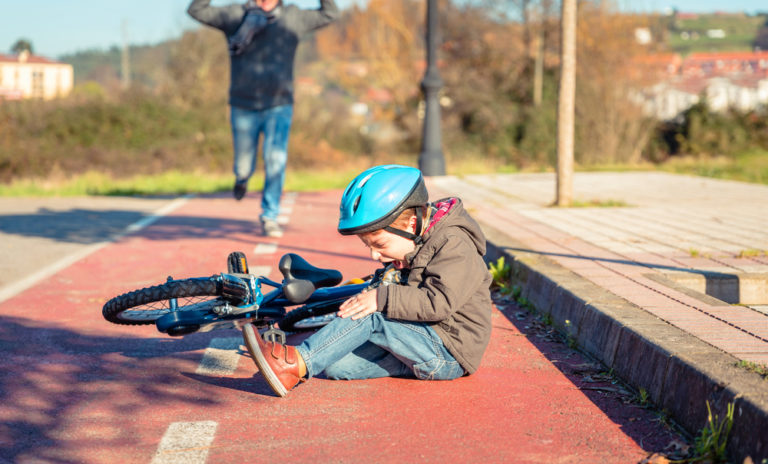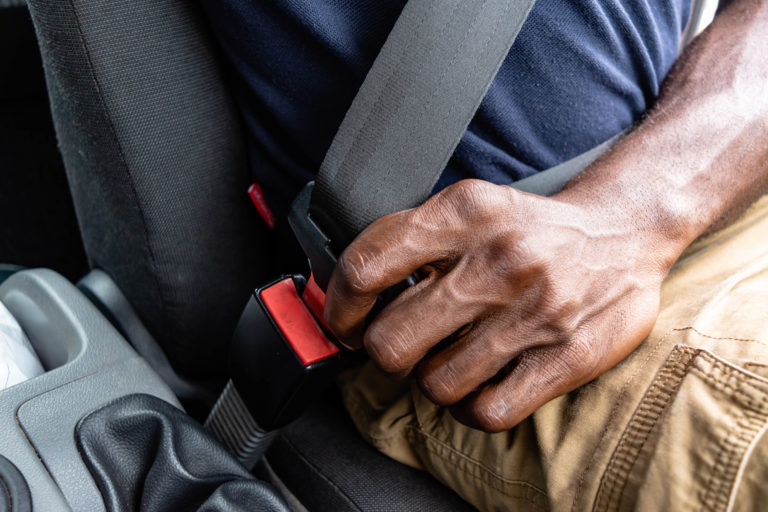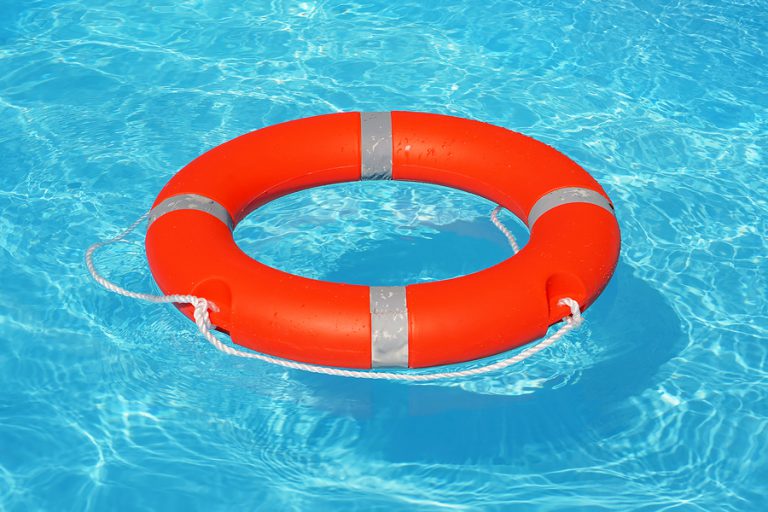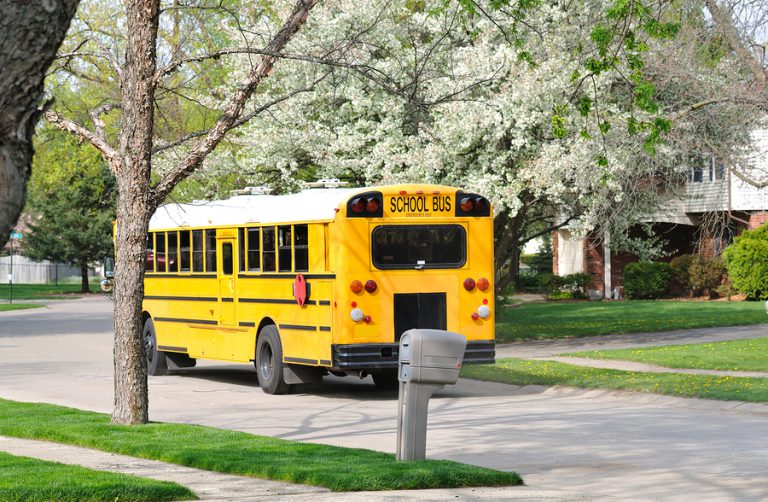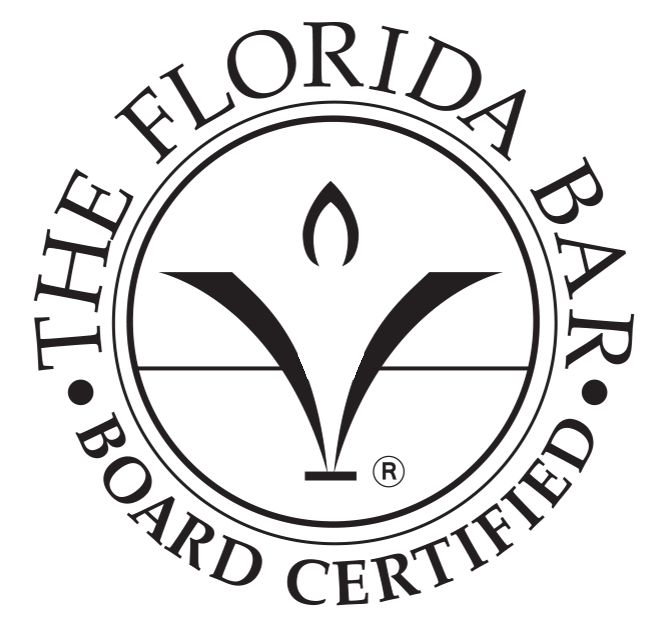In today’s world of television, video games, and cell phones, hearing that your child actually wants to go outside into the fresh air and get active can feel like a victory. But it comes with a host of other worries, such as cars on the street. When your child wants to ride his or her bicycle, crashes are inevitable—but there are some things you and your child can do to lower the likelihood.
1. Buy an appropriately sized bike. It can be tempting to buy one too big so your child can “grow into” it. But a bike that is too large can be awkward to handle and lead to injuries.
2. Fit your child’s helmet correctly. There are a variety of helmet sizes, and most helmets adjust. Fit it on your child level across the middle of the forehead, no more than one inch above the eyebrows, and make sure it doesn’t move more than one inch when pushed.
3. Teach bike riding in a stress-free, no-traffic, low-hazard area. Empty parking lots and empty tennis courts can work well.
4. Remove the training wheels early. A key component of bike riding is balancing, and training wheels do not teach this aspect. You can teach balance by removing the pedals, lowering the seat, and having the child “walk” the bike around, eventually building to pushing off and coasting. Another method is to use a towel underneath the child’s armpits with you holding the ends. This way, you can catch the child if he or she starts to fall, but they’ll start to understand the feeling of falling and how to adjust.
5. Teach stopping safely. Once your child is comfortable peddling without training wheels, make sure he or she can stop without falling over. Give the child a target to stop directly in front of, or play Red Light / Green Light with faster and faster Red Lights.
If your child does get in a bike accident that is the fault of another, contact Zimmet & Zimmet for a free consultation to have your options explained.

